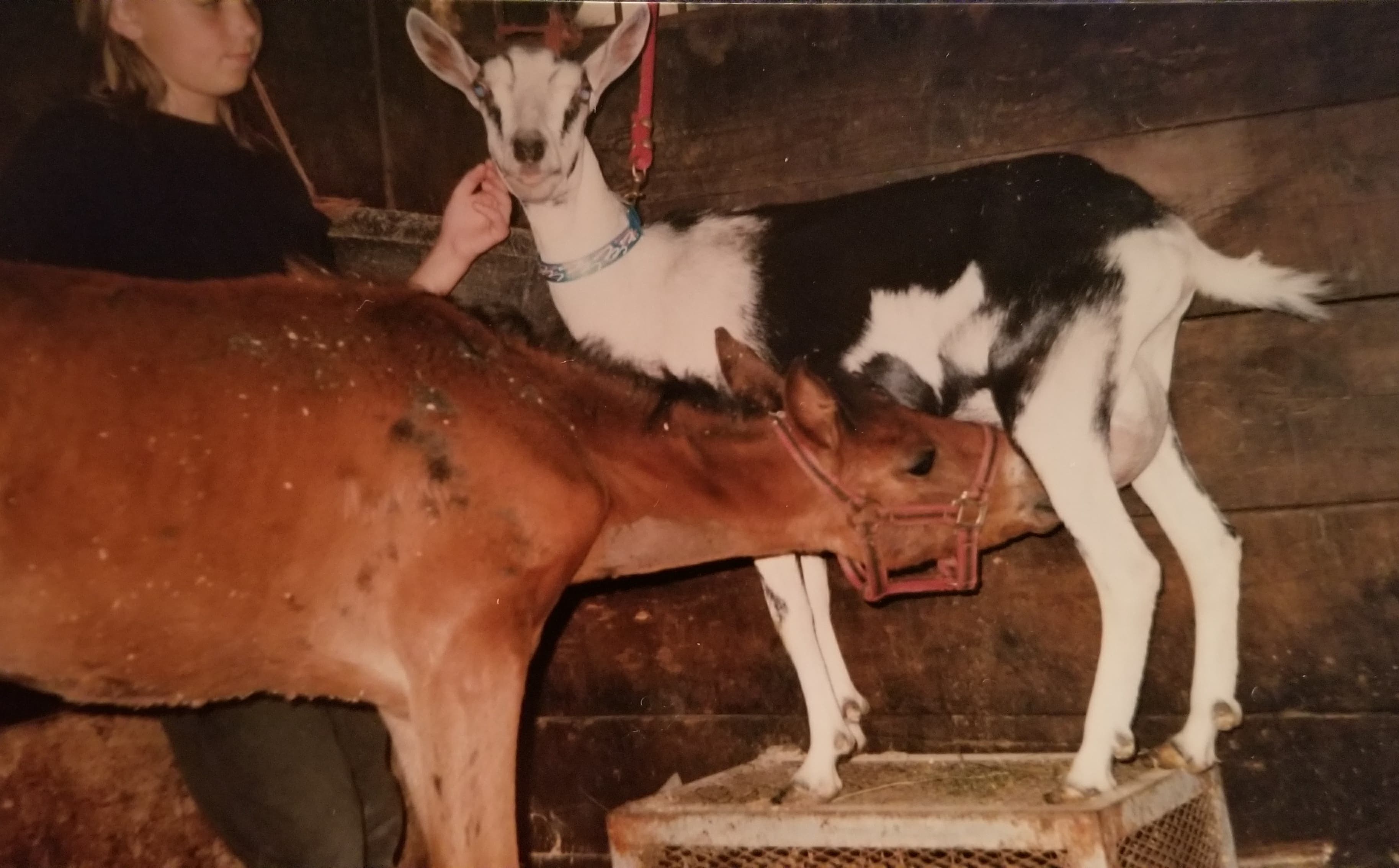
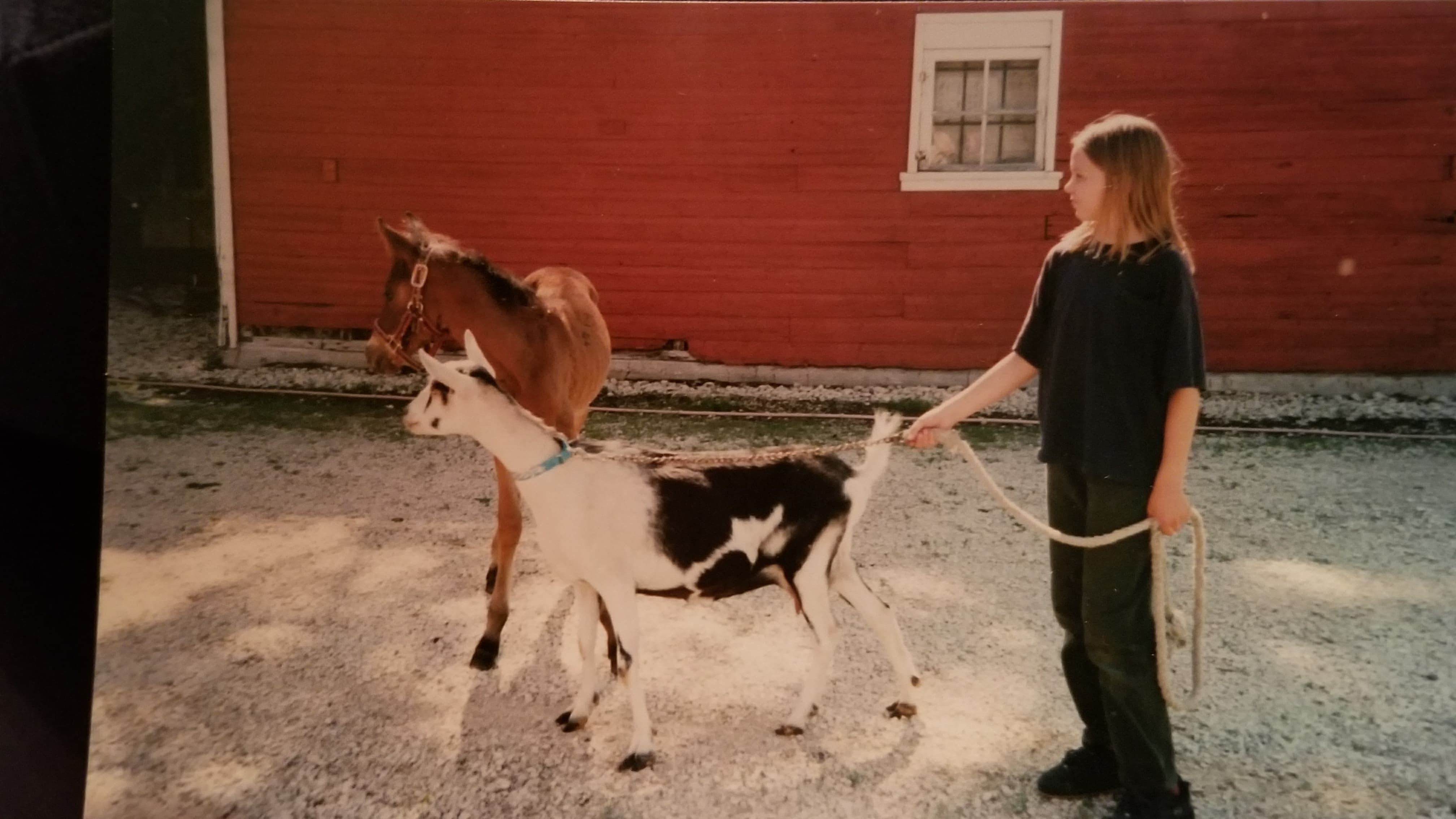
It never really felt like spring, until the foals began to arrive. There’s little that can create a smile like a foal skipping and gamboling about. Multiply that, and you’re guaranteed more smiles, and a good many chuckles as well.
Sadly, things don’t always work to plan. Sometimes foals are lost. Sometimes mares are lost, and once in a while, the mare doesn’t produce enough milk, to feed her new foal. A foal must have colustrum milk shortly after birth, something available from many equine vets, but there’s still the problem of how to feed baby. Many go with milk replacer for foals. Never feed a foal, cow’s milk. It can shut your foal’s gut down and kill it! We go the goat milk route. If a goat isn’t available, we buy from a grocery store. This story is about Merry Anna, our orphan foal that really wasn’t.
Within a few days of being born, it was beginning to look like something wasn’t quite right. She appeared lethargic, and somewhat depressed as well. I checked the mare, and she had milk. We’d also observed the bay filly nursing. Something wasn’t quite right, yet I couldn’t put my finger on it. Running my hands over the far too quiet filly, I frowned. I could feel all sorts of little bumps. Upon closer inspection, these were actually little scabs. This wasn’t good, not good at all. There didn’t seem to be anything obviously wrong, yet somehow, something sure as shooting was. I decided to err on the side of caution. I gave my most excellent, knowledgeable vet a call, and after a brief discussion, it was decided that I would take her in.
Now, Merry Anna’s dam was about the sweetest, old horse, you could ever want to know. She’d been a trusted mount for my son when the time had come to move up from his beloved Shetland, Chauncey, and trusted us, as much as we trusted her. I decided to leave her at home, and just take Annie, as we were already fondly calling her filly. After all, Anna didn’t get at all upset or worried whenever we did anything with baby, and it was less risky as well. So, we bedded the trailer nice and deep, lifted Merry Anna in, and were soon on our way.
At the vet’s, I was somewhat relieved that Annie appeared a bit perkier. Standing with her outside of the clinic, after having a checkup and samples taken, I smiled when she frolicked around with little crowhops. I figured, if she felt good enough to do that, things couldn’t be all that bad. I couldn’t have been more wrong. When the vet returned and asked me how valuable she was, my heart sank. Turned out she needed a blood transfusion. Needless to say, Annie got her transfusion, stayed at the vet’s a few days, and I had a rather heart-stopping bill to pay. I now owned, a very expensive foal.
As it turned out, her dam, Anna, was not producing enough milk anyway. Not the cause of the problem, but it certainly would quickly create one. We decided to go a different route, and find a nanny goat. Now, goat milk is on par with horse milk, plus goats could produce a healthy volume, suitable to raise a foal. It was time to rent a goat. Lucky for me, a friend had goats, and they were hand-milked. The problem was solved, sort of. The trick now, was to get the pair to bond. Annie was willing. Gardenia the goat, not so much.
I’m a big believer in a solution to every problem, and as stubborn as she was, I was more so. Gardenia and her new charge were secluded in the barn. Far away from the sounds of other animals. We taught her to hop onto a bale of straw so Annie could reach a bit easier. One person would restrain Gardenia, while the other guided the filly to a hot meal. It took persistence, but within 3 days, we only had to encourage Gardenia to hop onto the bale. She no longer objected to nursing a foal.
After about 5 days, I wanted to get the stall stripped down. We’d been adding fresh straw instead of cleaning, in an effort to keep the goat calm. As the pair were now bonded, I had the kids lead Gardenia, and simply keep an eye on Annie. They were very young back then, and thought it great fun. I was barely started my task, when my son came barrelling back into the barn, “Mom, Mom! Gardenia died!”
I hurried back out with him, only to find the goat staggering back onto her feet, my little sweetpea consoling and comforting her.
“Annie started running Round,” my daughter excitedly told me, “and Gardenia called her, then fell down,” she went on to explain, as serious as could be, “We thought she died.”
Right then, I realized what had happened. Gardenia had become stressed, and fainted! It was something that happened now and again over the next few months. Annie would race around, as foals are apt to do, Gardenia would worry, and faint.
Goat and filly became very close and completely bonded. The goat came to understand horse, and Annie understood goat. Gardenia was, to all extent and purpose, Annie’s mother. They stayed together until Annie was 3 and a half months old. I thought it was time to wean them, before Annie got any bigger and possibly accidentally injured her adoptive mother. Annie went into the box stall while the kids loaded the goat into the trailer. They were barely 10 feet from it, when there was a thud from inside. Gardenia had fainted again. It was a summer to remember, and Merry Anna grew into a beautiful mare. Gardenia never raised another foal, but did a brilliant job of the one she did.
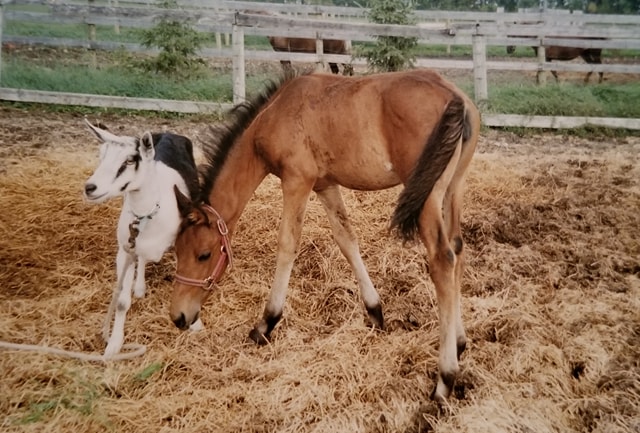
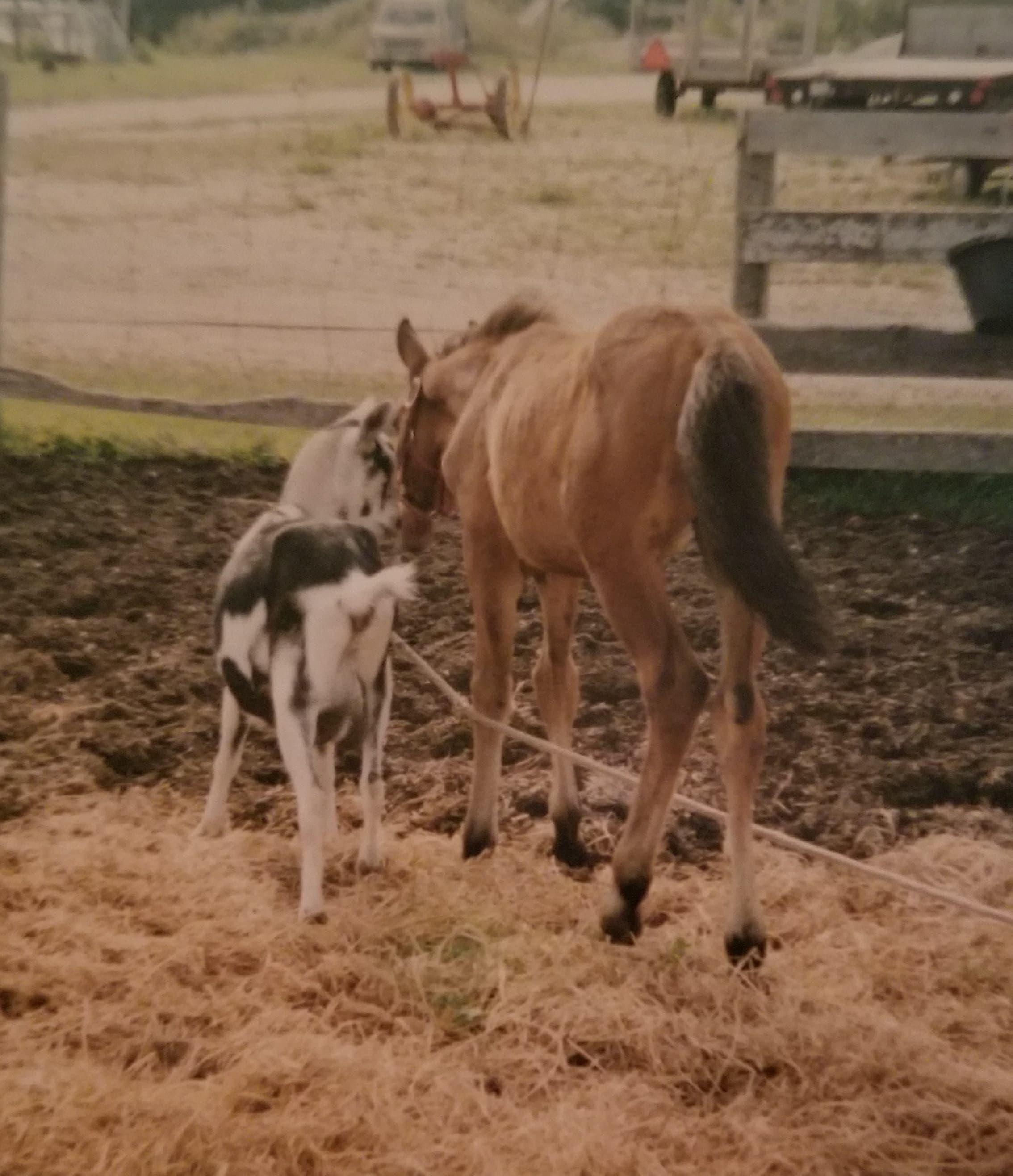
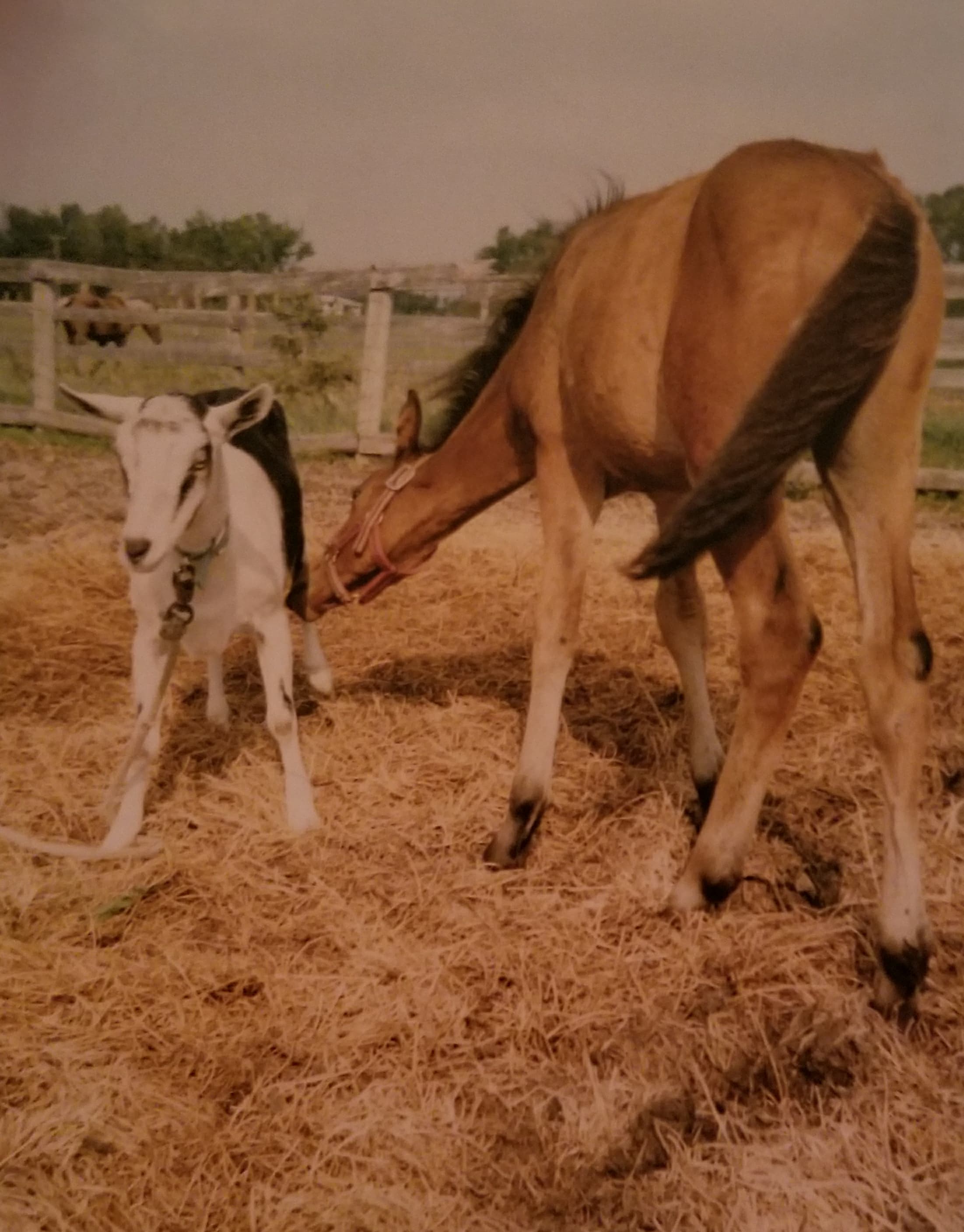





Leave a Reply